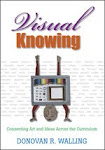
Many of us, myself included, are eager to seek out historic homes, museums, art galleries, and other places of interest when we travel but rarely, if ever, do the same when we’re at home. Of our local treasures we think, “They’re right here, so I can visit them anytime,” and yet we never go.
Recently my partner, a friend, and I decided to change that by spending a wet, wintry Saturday visiting the presidential home of Benjamin Harrison in Indianapolis. None of us had ever seen it. Now I might be excused, having lived in Indiana only nineteen years, but the other two are lifelong Hoosiers. This house museum turned out to be a delightful local treasure, well kept and fascinating, with a knowledgeable docent on hand to point out otherwise easily missed items and their interesting history.
In 2010 Bloomingonians will have an extraordinary opportunity to tour another local treasure, even closer to home, as the Lilly Library on the Indiana University campus celebrates its fiftieth anniversary. At the time of its dedication on October 3, 1960, the library holdings — more than 75,000 books and 1,500,000 manuscripts — represented the combined resources of the university Department of Special Collections and the private library of Josiah Kirby Lilly, Jr. (1893-1966). The latter had been given to IU during 1956-57. J.K. Lilly, Jr., (above) was a grandson of Colonel Eli Lilly, founder of the pharmaceutical giant Eli Lilly and Company. Since 1960 the library holdings have grown to nearly 400,000 books, more than 100,000 pieces of sheet music, and more than 6,500,000 manuscripts.
Items range from major rare books, for example, the New Testament of the Gutenberg Bible and Audubon’s Birds of America, to famous manuscripts, such as Robert Burns’s “Auld Lang Syne,” and J. M. Synge’s The Playboy of the Western World.
According to Bloomington’s Herald-Times newspaper, residents and visitors to the Lilly Library in 2010 will have much to enjoy:
The year will begin with the exhibition ‘Treasures of the Lilly Library,’ featuring such rare treasures as William Shakespeare's ‘First Folio,’ George Washington's letter accepting the presidency, Albrecht Durer’s ‘Apocalypse,’ and the first edition of Geoffrey Chaucer’s ‘Canterbury Tales,’ printed between 1476 and 1478. There will be a celebratory open house to view this exhibition and the newly renovated Reading Room from 5 to 9 p.m. Jan.22.
The celebration will continue with a summer display of more of the Lilly Library’s treasures, including a copy of ‘Hamlet’ printed on cork, Rita Hayworth’s makeup case, medicine show signs painted by James Whitcomb Riley and pencils made by Henry David Thoreau’s family pencil company. The year will end with an exhibition of 100 Medieval and Renaissance manuscripts, curated by scholar Christopher DeHamel.
This trove should give local folk — and discerning people everywhere — pause to consider their local treasures, those perfect destinations for stay-at-home vacations.





